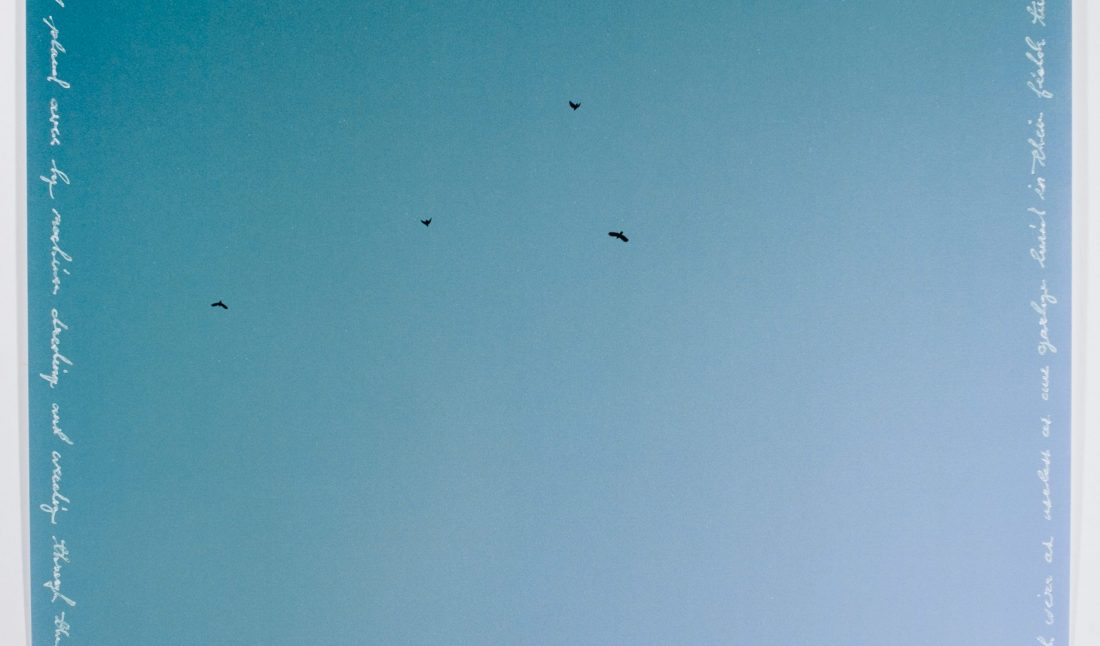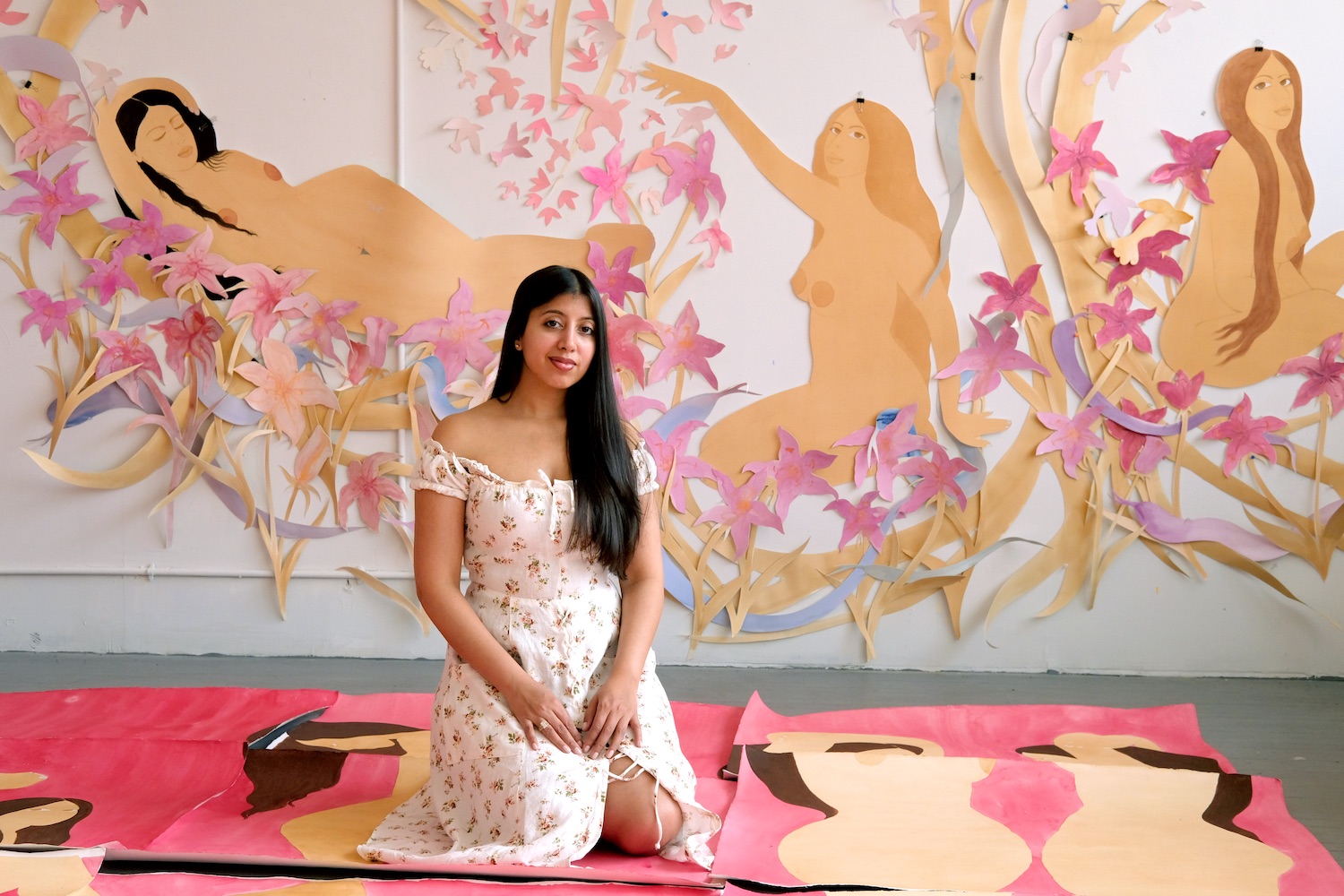In January, Sky Hopinka’s Kicking the Clouds (2021) was shown during the Sundance Film Festival. The short film started with a 50-year-old cassette tape of the artist’s grandmother and great-grandmother having a Luiseño language session. After receiving the tape from his mother, he interviewed her about it, as well as about life, relationships, and family in her hometown of Ferndale, Washington.
Hopinka’s film work and art practice is a meditation on language—in sound and sight—as well as landscape. He captures images and video of land, water, and sky full of emotion, tension, and stories told, or lost. A writer and poet, he explores the tension of text on screen, etches it into the border of photographs, or shapes it into calligrams.
Based in upstate New York, where he teaches at Bard, the artist was also named one of the inaugural Forge Project Fellows. The new initiative supporting Indigenous peoples working in arts, culture, sovereignty, language revitalization, and more provides $25,000 grants as well as time and space to work at its Forge House.
Whitewall spoke with Hopinka about his practice and plans for the fellowship.
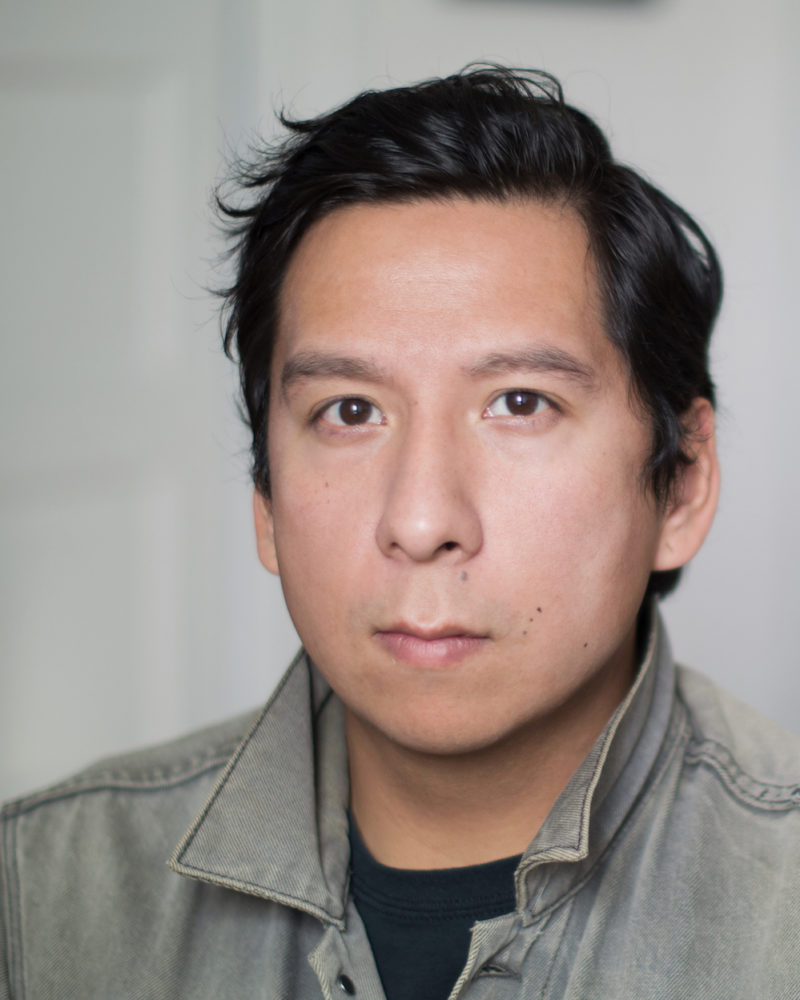 Portrait courtesy of Sky Hopinka.
Portrait courtesy of Sky Hopinka.
WHITEWALL: Congratulations on being named a Forge Project Fellow! Do you know yet how you’ll be spending your time there?
SKY HOPINKA: I have a new series of photographs as well as some new video installations, so I’ll be working on that for the next three or four months in preparation for an exhibition I have in May at Broadway Gallery in New York. So I’ll have access to the studio for the next four months or so. I’ll be printing out a bunch and working with some material that I’ve gathered for the last year—photos I’ve taken and video that I’ve shot, film that I’ve taken.
WW: When you do that, capture photos and video, is it with an end goal in mind?
SH: It’s generally free-form, of landscapes, filming friends, and in the end seeing how they all fit together with some other thing I’ve been thinking about or things that I’ve been writing or other things I’ve been making outside of film work.
When I shoot, I’m shooting essentially for myself. I’m not necessarily shooting with an end project in mind. For the most part, I’m shooting for composition or aesthetics of the landscape or the horizon line, or things that I think are interesting within the frame. In the editing, I try to imbue some sense of meaning into these images, whether it’s through the juxtaposition of other shots or to the inclusion of text, or sound, or voice. I think a lot about not being too reliant on the sacred beauty of the image or landscape—how can it be more than its aesthetic pleasures? And how can you use some of that, as well, to add meaning or weight with words or sound or voice?
I like the word “complication”—not a problem that’s introduced, rather just how can more information complicate one’s understanding of something?
WW: Can you tell us about your film Kicking the Clouds that premiered at Sundance?
SH: Last February my mom had sent me a cassette tape that was about 50 years old of my grandma and great-grandma having a Luiseño language lesson in the late sixties, early seventies. Having heard that tape, I started thinking about that side of my family, my mom, my grandma, my hometown. I tried to start from there in terms of making a film about my mom and grandma. And so when I went back home to Ferndale, last March or April, I brought a camera and did a lot of shooting. And the film came together from that. I also did an interview with my mom about that tape. Having those different elements, I started to put them together.
WW: Language is central in your work. How do you think about putting together image, sound, spoken word, and text on the screen?
SH: I suppose it’s pretty intuitive, finding images, especially of the landscape around Washington or Washington County. And then also figuring out how much of my mom I want to film, how much I want to share of my family. How can the edits and the cuts and the visuals be illustrative or demonstrative of my relationship to the content? Or how does that represent me in a certain way, too, the conversation with these different voices?
WW: What was it like making your feature-length film maɬni—towards the ocean, towards the shore [2020]? What was it like to work on that scale?
SH: With that film, I really wanted to not do anything new. I wanted to see how my short filmmaking practice could scale up into something longer and still work primarily by myself, shooting and editing and sound work. I had a friend that ran sound for one of the shoots that I did. But really it was me with my camera and visiting places with my friends Sweetwater and Jordan. That felt comfortable to then start thinking about how to make things longer, or how to tell a bigger story.
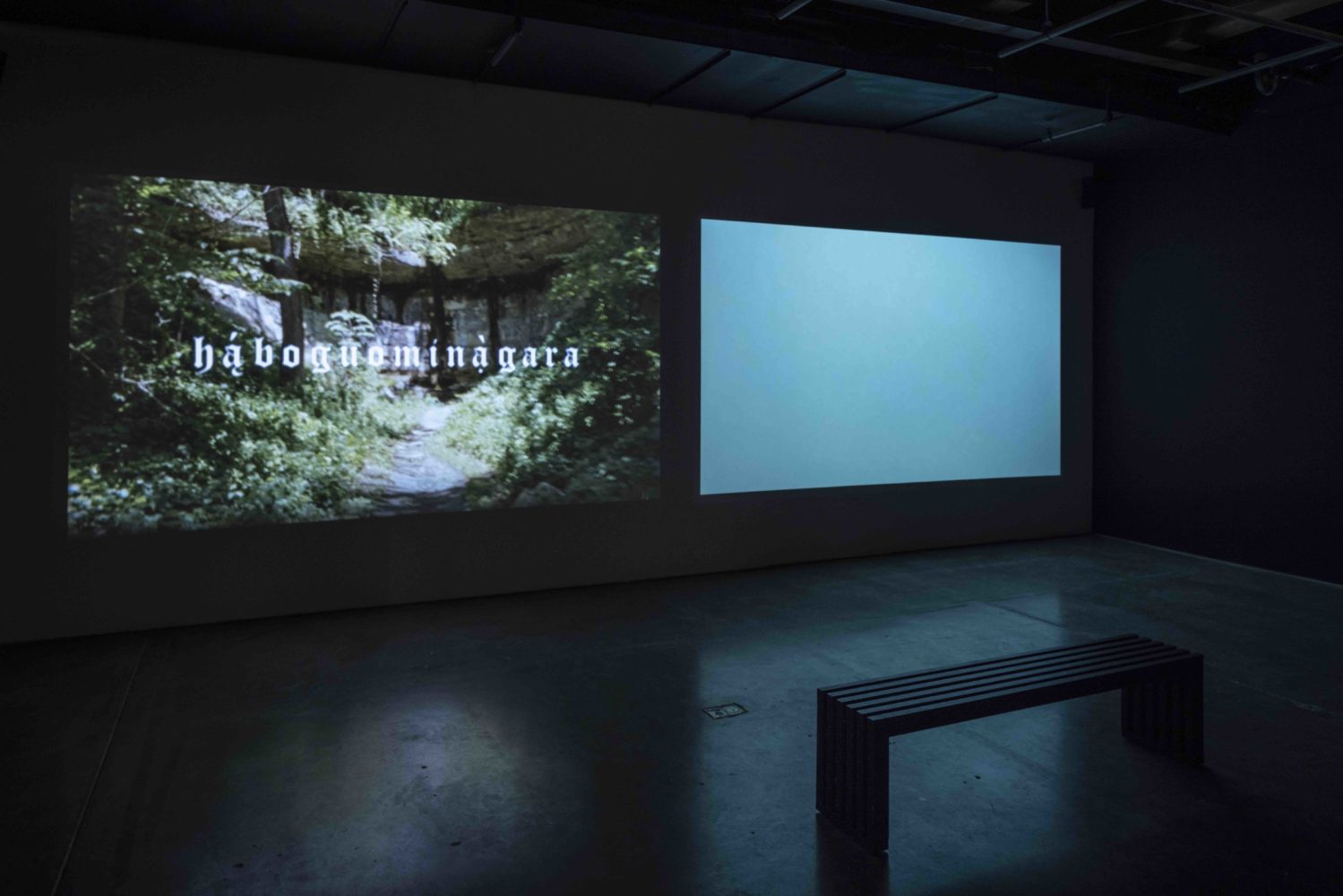 Sky Hopinka, “The Island Weights”, 2021, installation view of Prospect.5 “Yesterday we said tomorrow” at Contemporary Arts Center, New Orleans, photo by Alex Marks; courtesy of Prospect New Orleans.
Sky Hopinka, “The Island Weights”, 2021, installation view of Prospect.5 “Yesterday we said tomorrow” at Contemporary Arts Center, New Orleans, photo by Alex Marks; courtesy of Prospect New Orleans.
WW: How did you begin your “Breathing” series [2020], which has writings, text on photographs?
SH: The etching started with the previous series of photographs, called “The Land Describes Itself” [2019]. I don’t know why I started, but for some reason, it made sense to have a sort of nondescript text or this failure of a description of a text on these images. And I was developing that process a bit more, and I wanted to do that again. The “Breathing” series was a natural way to inscribe these sorts of words or poems in these photographs, in this square form that has lots of landscape and orientation, but also as some sort of like prayers, I suppose.
I’m still thinking through it. I’m still looking at ways of inscribing text on them or other thinking about other ways to intervene on these images and photographs, and in broad ways questioning what a photograph is, or the reproducibility of them—what makes them unique and what makes them markers or memories of different spaces or places that I’ve been to?
WW: For you, have landscape and language always been connected?
SH: I think that developed when I started learning Chinuk and thinking about Indigenous language and how language doesn’t exist by itself. I was thinking about this as a landscape where this language exists and how a landscape informs the language, or how the people inform the language, or how the language serves the people that use the language.
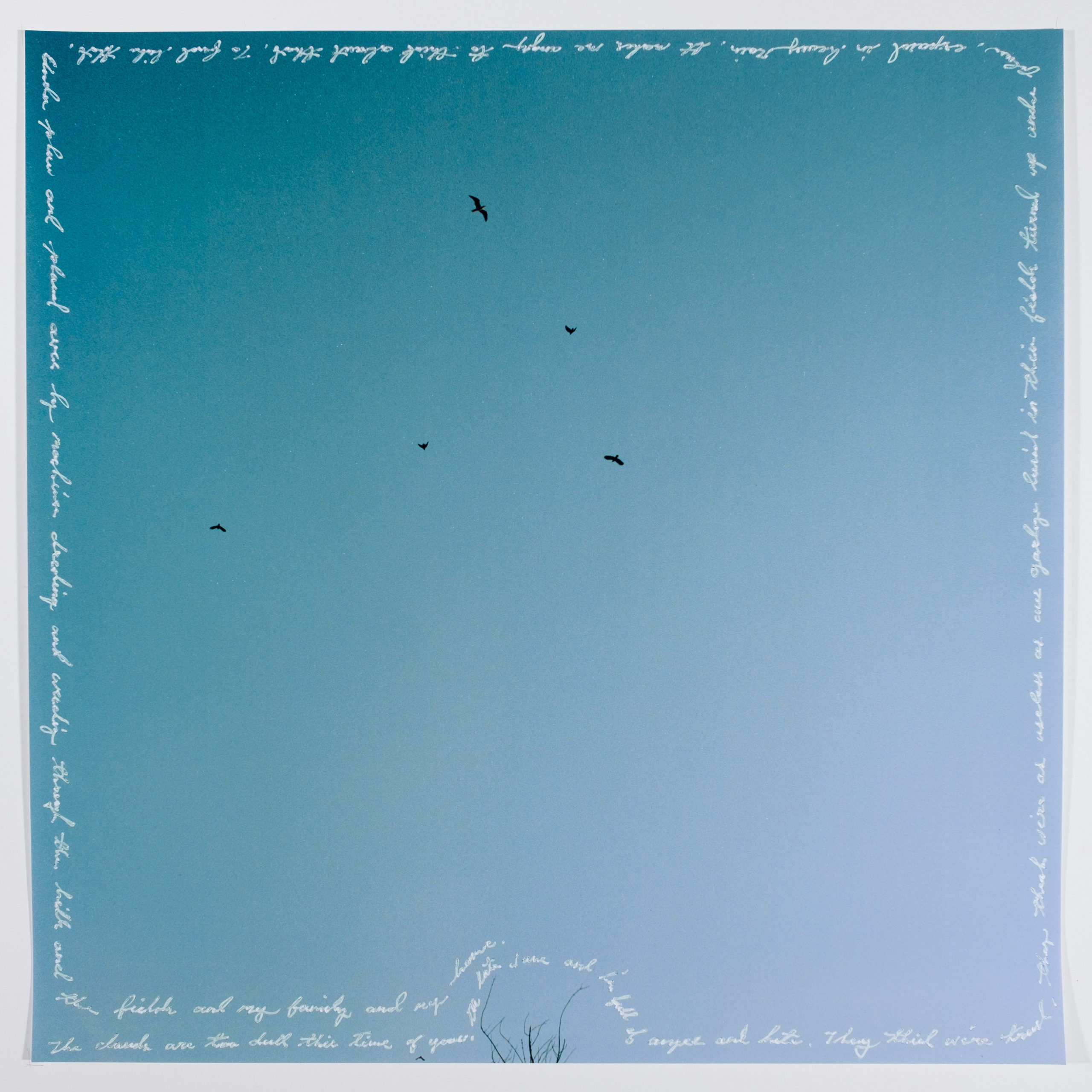 Sky Hopinka, “The clouds are too dull this time of year…weeding through the hills and the fields and my family and my home.”, 2020, inkjet print, etching, 17 x 17 inches; courtesy of Sky Hopinka.
Sky Hopinka, “The clouds are too dull this time of year…weeding through the hills and the fields and my family and my home.”, 2020, inkjet print, etching, 17 x 17 inches; courtesy of Sky Hopinka.







